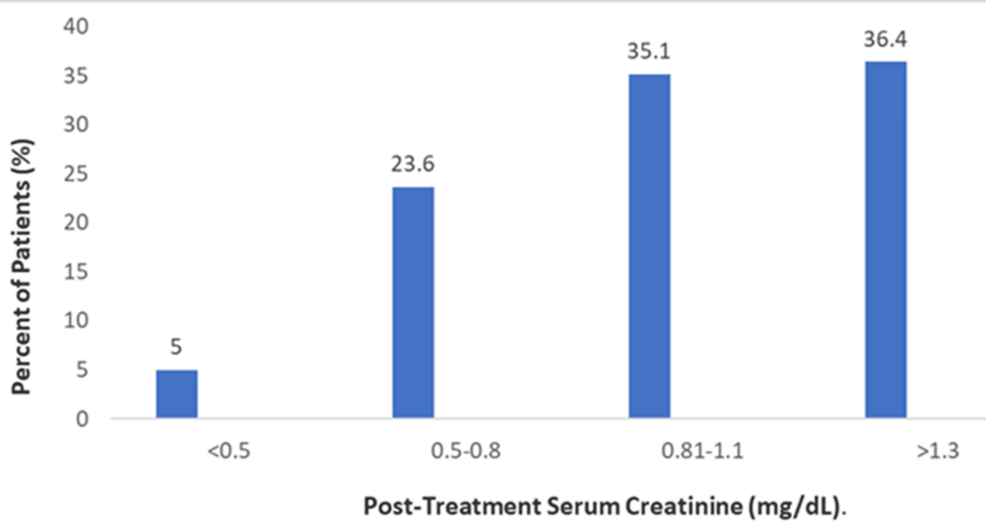SAVE 20%: As of Nov. 29, the Pokémon TCG Mega Lucario ex Figure Collection has dropped to $55.99 at Amazon, which is below TCGplayer’s market value plus shipping.
Blog
-

Exactly When To See A ‘Cold Supermoon’ Rise
Topline
The full cold moon — the third and final of fall in the Northern Hemisphere — will turn full on Thursday, Dec. 4, 2025. Named for the chilly temperatures at this time of year in North America, this moon is not only the second-biggest…
Continue Reading
-
Emirates GBR Driver Dylan Fletcher says ‘the job’s not done yet’ as team enters Grand Final weekend in pole position – SailGP
- Emirates GBR Driver Dylan Fletcher says ‘the job’s not done yet’ as team enters Grand Final weekend in pole position SailGP
- Britain’s Mills plots race-winning strategy for SailGP finale Reuters
- A chat with Red Bull Italy co-owner Assia…
Continue Reading
-

council backs major housing project
Ben LynchLocal Democracy Reporting Service
 ECDC
ECDCThe development at Earl’s Court is expected to be complete by early 2043, if fully approved A £10bn regeneration project in Earl’s Court, west London, has reached a “major milestone” after the first…
Continue Reading
-
DG ISPR urges Afghan Taliban to halt support for terrorist groups – RADIO PAKISTAN
- DG ISPR urges Afghan Taliban to halt support for terrorist groups RADIO PAKISTAN
- Afghan posts open fire to facilitate infiltration of terrorists into Pakistan: DG ISPR Dawn
- How an airstrike has put the Pakistan-Afghanistan peace deal at risk The…
Continue Reading
-
Comparing activated carbon and graphene-based electrodes using electrosorption process to quantify environmental impact associated with thorium extraction via LCA framework
Alotaibi, A. M., Ismail, A. F. & Aziman, E. S. Ultra-effective modified clinoptilolite adsorbent for selective thorium removal from radioactive residue. Sci. Rep. 13, 1–21 (2023).
Aziman, E. S. & Ismail, A. F. Frontier looking of rare-earth processed residue as sustainable thorium resources: an insight into chemical composition and separation of thorium. Prog Nucl. Energy. 128, 103471 (2020).
Yussuf, N. M., Ismail, A. F., Aziman, E. S., Mohamed, N. A. & Teridi, M. A. M. Innovative g-C3N4/AX composite electrode for effective thorium elimination from aqueous solutions. Sep. Purif. Technol. 330, 125205 (2024).
Salehuddin, A. H. J. M., Ismail, A. F., Bahri, C. N., Aniza, C. Z. & Aziman, E. S. Economic analysis of thorium extraction from monazite. Nucl. Eng. Technol. 51, 631–640 (2019).
Toit, M. H. D., Van Niekerk, F. & Amirkhosravi, S. Review of thorium-containing fuels in LWRs. Prog Nucl. Energy. 170, 105136 (2024).
Humelnicu, D., Dinu, M. V. & Drǎgan, E. S. Adsorption characteristics of UO22 + and Th4 + ions from simulated radioactive solutions onto chitosan/clinoptilolite sorbents. J. Hazard. Mater. 185, 447–455 (2011).
Krūmiņš, J. & Kļaviņš, M. Investigating the potential of nuclear energy in achieving a Carbon-Free energy future. Energies 16, 1–31 (2023).
Reijonen, H. M., Alexander, W. R. & Norris, S. Resilience in knowledge management – the case of natural analogues in radioactive waste management. Process. Saf. Environ. Prot. 180, 205–222 (2023).
IAEA. Radioactive Waste Management Solutions for a Sustainable Future. in Proc. an Int. Conf. Vienna, Austria, 1–5 Novemb. 2021 1–5. International Atomic Energy Agency, (2023).
Chu, E. W. & Karr, J. R. Ref. Modul Life Sci. 1–22 (Elsevier, doi:https://doi.org/10.1016/b978-0-12-809633-8.02380-3 (2017).
Yu, T. H. et al. Life cycle assessment of environmental impacts and energy demand for capacitive Deionization technology. Desalination 399, 53–60 (2016).
Vahidi, E. & Zhao, F. Environmental life cycle assessment on the separation of rare Earth oxides through solvent extraction. J. Environ. Manage. 203, 255–263 (2017).
Wang, X. et al. Electrochemical behavior of Th(IV) and its electrodeposition from ThF4-LiCl-KCl melt. Electrochim. Acta. 196, 286–293 (2016).
Liu, Y. L. et al. Electroseparation of thorium from ThO2 and La2O3 by forming Th-Al alloys in LiCl-KCl eutectic. Electrochim. Acta. 158, 277–286 (2015).
Al-Areqi, W. M., Bahri, C. N. A. C. Z., Majid, A. A. & Sarmani, S. Separation and radiological impact assessment of thorium in Malaysian monazite processing. Malaysian J. Anal. Sci. 20, 770–776 (2016).
Al-Areqi, W. M., Bahri, C. N. A. C. Z., Majid, A. A. & Sarmani, S. Solvent extraction of thorium from rare Earth elements in monazite thorium concentrate. Malaysian J. Anal. Sci. 21, 1250–1256 (2017).
Shilpa, A. S., Thangadurai, T. D., Bhalerao, G. M. & Maji, S. Tailor-designed carbon-based novel fluorescent architecture for nanomolar detection of radioactive elements U(VI) and Th(IV) in pH ± 5.0. Talanta 272, 125783 (2024).
Corradetti, S. et al. Effect of graphite and graphene oxide on thorium carbide microstructural and thermal properties. Sci. Rep. 11, 1–11 (2021).
Yussuf, N. M., Ismail, A. F., Mohamed, N. A. & Teridi, M. A. M. Photocatalytic Th(IV) removal: unleashing the potential of amidoxime-modified graphitic carbon nitride photocatalyst. Mater. Lett. 357, 135771 (2024).
Iskandar, B. T., Ismail, A. F., Aziman, E. S. & Ahmad, S. Advancing towards technology readiness: Continuous-flow electrosorption for thorium separation from rare Earth processing by-products. Nucl. Eng. Technol. https://doi.org/10.1016/j.net.2024.06.023 (2024).
Mohamed, N. A., Ismail, A. F., Safaei, J., Johan, M. R. & Teridi, M. A. M. A novel photoanode based on thorium oxide (ThO2) incorporated with graphitic carbon nitride (g-C3N4) for photoelectrochemical water splitting. Appl. Surf. Sci. 569, 151043 (2021).
Aziman, E. S. & Ismail, A. F. Rapid selective removal of thorium via electrosorption towards efficiently managing rare-earth extraction residue. J. Environ. Chem. Eng. 9, 105478 (2021).
Lima, F. M., Lovon-Canchumani, G. A., Sampaio, M. & Tarazona-Alvarado, L. M. Life cycle assessment of the production of rare Earth oxides from a Brazilian ore. Procedia CIRP. 69, 481–486 (2018).
Raj, D. & Kannan, U. Analysis for the use of thorium based fuel in LWRs. Ann. Nucl. Energy. 174, 109162 (2022).
Liu, X. et al. Efficient and selective capture of thorium ions by a covalent organic framework. Nat. Commun. 14, 1–10 (2023).
Frischknecht, R. et al. Global guidance on environmental life cycle impact assessment indicators: progress and case study. Int. J. Life Cycle Assess. 21, 429–442 (2016).
Grout, L., Hales, S., French, N. & Baker, M. G. A review of methods for assessing the environmental health impacts of an agricultural system. Int J. Environ. Res. Public. Health 15(7), 1315 (2018).
Godinaud, J. et al. Life cycle assessment of an aquifer thermal energy storage system: influence of design parameters and comparison with conventional systems. Geothermics 120, 102996 (2024).
Weisser, D. A guide to life-cycle greenhouse gas (GHG) emissions from electric supply technologies. Energy 32, 1543–1559 (2007).
Zhao, E., May, E., Walker, P. D. & Surawski, N. C. Emissions life cycle assessment of charging infrastructures for electric buses. Sustain. Energy Technol. Assessments. 48, 101605 (2021).
Ashley, S. F., Fenner, R. A., Nuttall, W. J. & Parks, G. T. Life-cycle impacts from novel thorium-uranium-fuelled nuclear energy systems. Energy Convers. Manag. 101, 136–150 (2015).
Koltun, P. & Klymenko, V. Cradle-to-gate life cycle assessment of the production of separated mix of rare Earth oxides based on Australian production route. Min. Min. Depos. 14, 1–15 (2020).
Bicer, Y. & Dincer, I. Life cycle assessment of nuclear-based hydrogen and ammonia production options: A comparative evaluation. Int. J. Hydrogen Energy. 42, 21559–21570 (2017).
Browning, G., Northey, S., Haque, N., Bruckard, W. & Cooksey, M. Life cycle assessment of rare earth production from monazite. TMS Annu. Meet https://doi.org/10.1002/9781119275039.ch12 (2016).
Rahmat, M. A. et al. The impact of unregulated industrial tin-tailing processing in malaysia: Past, present and way forward. Resour. Policy. 78, 102864 (2022).
Lynas Radiological impact assessmant of Lynas advanced materials plant – Quarterly Report. (2011).
Akhtar, N. et al. Particle size distribution and composition of soil sample analysis in a single pumping well using a scanning electron microscope coupled with an energy dispersive X-ray. Water 15, 1–20 (2023).
Wattier, B. D., Matinez, N. E., Carbajales-Dale, M. & Shuller-Nickles, L. C. Use of life cycle assessment (LCA) to advance optimisation of radiological protection and safety. J. Radiol. Prot. 43, 031514 (2023).
Søndergaard, G. L. & Abstract, M. Owsianiak in Life Cycle Assess. Theory Pract. (eds. Hauschild, M. Z., Rosenbaum, R. K. & Olsen, S. I.) 1–1216Springer Berlin Heidelberg, (2017). https://doi.org/10.1007/978-3-319-56475-3
ISO 14044. Environmental management: life cycle assessment; principles and framework. (International Organization for Standardization, 2006). (2006).
ISO 14040. Environmental management systems: life cycle assessment; principles and framework. (2014). at (2014). http://publications.apec.org/publication-detail.php?pub_id=453
Navarro, J. & Zhao, F. Life-cycle assessment of the production of rare-earth elements for energy applications: A review. Front. Energy Res. 2, 1–17 (2014).
Gibon, T. & Menacho, Á. H. Parametric life cycle assessment of nuclear power for simplified models. Environ. Sci. Technol. 57, 14194–14205 (2023).
Wernet, G. et al. The ecoinvent database version 3 (part I): overview and methodology. Int. J. Life Cycle Assess. 21, 1218–1230 (2016).
Yussuf, N. M., Ismail, A. F., Rahmat, M. A. & Mohamed, N. A. Electrosorption-driven selective thorium removal from radioactive wastewater with phosphate – Incorporated g-C3N4 electrode. J. Environ. Chem. Eng. 12, 113440 (2024).
Aziman, E. S., Ismail, A. F., Muttalib, N. A. & Hanifah, M. S. Investigation of thorium separation from rare-earth extraction residue via electrosorption with carbon based electrode toward reducing waste volume. Nucl. Eng. Technol. 53, 2926–2936 (2021).
Hernandez, P., Oregi, X., Longo, S. & Cellura, M. In Handb. energy Effic. Build. a life cycle approach 207–261 (Elsevier Inc., 2018). https://doi.org/10.1016/B978-0-12-812817-6.00010-3
Pfister, S., Koehler, A. & Hellweg, S. Assessing the environmental impacts of freshwater consumption in LCA. Environ. Sci. Technol. 43, 4098–4104 (2009).
Jin, Y., Behrens, P., Tukker, A. & Scherer, L. Water use of electricity technologies: A global meta-analysis. Renew. Sustain. Energy Rev. 115, 1–11 (2019).
Hilali, A., Mardoude, Y., Essahlaoui, A., Rahali, A. & Ouanjli, N. E. Migration to solar water pump system: environmental and economic benefits and their optimization using genetic algorithm based MPPT. Energy Rep. 8, 10144–10153 (2022).
Cossutta, M. et al. A comparative life cycle assessment of graphene and activated carbon in a supercapacitor application. J. Clean. Prod. 242, 118468 (2020).
Mendonça, M. C. P., Rodrigues, N. P., De Jesus, M. B. & Amorim, M. J. B. Graphene-based nanomaterials in soil: ecotoxicity assessment using enchytraeus crypticus reduced full life cycle. Nanomaterials 9, (2019).
Ault, T., Krahn, S. & Croff, A. Comparing the environmental impacts of uranium- and thorium-based fuel cycles with different recycle options. Prog Nucl. Energy. 100, 114–134 (2017).
Chelvam, K., Hanafiah, M. M., Ali, A., Al Blooshi, A. & K. & Gate-to-gate life cycle analysis of a pilot-scale solar driven two-step thermochemical hydrogen sulfide decomposition for hydrogen production. J. Clean. Prod. 428, 139369 (2023).
Zapp, P., Schreiber, A., Marx, J. & Kuckshinrichs, W. Environmental impacts of rare Earth production. MRS Bull. 47, 267–275 (2022).
Schreiber, A., Marx, J. & Zapp, P. Life cycle assessment studies of rare earths production – Findings from a systematic review. Sci. Total Environ. 791, 148257 (2021).
Farjana, S. H., Huda, N., Mahmud, M. A. P. & Lang, C. Comparative life-cycle assessment of uranium extraction processes. J. Clean. Prod. 202, 666–683 (2018).
Continue Reading




